
The Senufo or Senufic languages comprise around 15 languages spoken by the Senufo in the north of Ivory Coast, the south of Mali and the southwest of Burkina Faso. An isolated language, Nafaanra, is also spoken in the west of Ghana. The Senufo languages constitute their own branch of the Atlantic–Congo sub-family of the Niger–Congo languages. Anne Garber estimates the total number of Senufos at some 1.5 million; the Ethnologue, based on various population estimates, counts 2.7 million.

The Gur languages, also known as Central Gur or Mabia, belong to the Niger–Congo languages. They are spoken in the Sahelian and savanna regions of West Africa, namely: in most areas of Burkina Faso, and in south-central Mali, northeastern Ivory Coast, the northern halves of Ghana and Togo, northwestern Benin, and southwestern Niger. A few Gur languages are spoken in Nigeria. Additionally, a single Gur language, Baatonum, is spoken in Benin and in the extreme northwest of Nigeria. Three other single Gur languages, the Tusya, Vyemo and Tiefo languages, are spoken in Burkina Faso. Another unclassified Gur language, Miyobe, is spoken in Benin and Togo. In addition, Kulango, Loma and Lorhon, are spoken in Ghana, Ivory Coast and Burkina Faso. Additionally, a few Mossi speakers are in Senegal, and speakers of the Dagaare language are also found in Cameroon. The Samu languages of Burkina Faso are Gur languages.

The Tuareg languages constitute a group of closely related Berber languages and dialects. They are spoken by the Tuareg Berbers in large parts of Mali, Niger, Algeria, Libya and Burkina Faso, with a few speakers, the Kinnin, in Chad.

Sandawe is a language spoken by about 60,000 Sandawe people in the Dodoma Region of Tanzania. Sandawe's use of click consonants, a rare feature shared with only two other languages of East Africa – Hadza and Dahalo, had been the basis of its classification as a member of the defunct Khoisan family of Southern Africa since Albert Drexel in the 1920s. Recent investigations however suggest that Sandawe may be related to the Khoe family regardless of the validity of Khoisan as a whole. A discussion of Sandawe's linguistic classification can be found in Sands (1998).
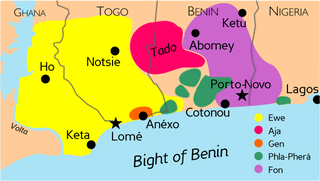
Fon also known as Dahomean is the language of the Fon people. It belongs to the Gbe group within the larger Atlantic–Congo family. It is primarily spoken in Benin, as well as in Nigeria, Togo, Ghana and Gabon, by approximately 2.28 million speakers. Like the other Gbe languages, Fon is an isolating language with a SVO basic word order.
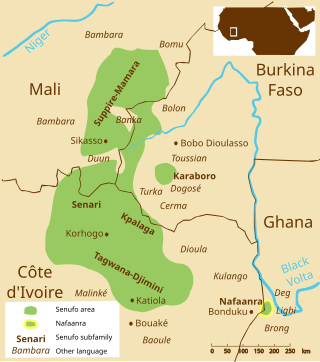
Nafaanra, also known as Nafanan or Nafana, is a Senufo language spoken in northwest Ghana, along the border with Ivory Coast, east of Bondoukou. It is spoken by approximately 90,000 people. Its speakers call themselves Nafana, but others call them Banda or Mfantera. Like other Senufo languages, Nafaanra is a tonal language. It is somewhat of an outlier in the Senufo language group, with the geographically-closest relatives, the Southern Senufo Tagwana–Djimini languages, approximately 200 kilometres (120 mi) to the west, on the other side of Comoé National Park.
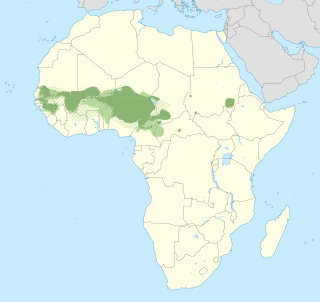
Fula, also known as Fulani or Fulah, is a Senegambian language spoken by around 36.8 million people as a set of various dialects in a continuum that stretches across some 18 countries in West and Central Africa. Along with other related languages such as Serer and Wolof, it belongs to the Atlantic geographic group within Niger–Congo, and more specifically to the Senegambian branch. Unlike most Niger-Congo languages, Fula does not have tones.
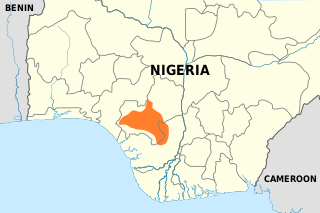
Edo, colloquially and often referred to as Bini, is the language spoken by the Edo ethnic group in Edo State, Nigeria. Benin is not a language but, rather, the name of the capital city, and the name of the Kingdom. Edo language is the native tongue of the Edo people and was the primary language of the Benin Empire and its predecessor, Igodomigodo for thousands of years. Edo language is the majority language spoken in Edo State, particularly in Benin City, and the surrounding local governments and senatorial districts in the Southern parts of the State. While everyone from the state are referred to as Edolites, but the Edo speaking people are known as the Edos.
Kusaal is a Gur language spoken primarily in northern eastern Ghana, and Burkina Faso. It is spoken by about 121,000 people and takes its name from the Kusaal people, or Kusasi. There is a distinctive dialect division between Agole, to the East of the Volta River, and Toende, to the West. Agole has more speakers. The 6-district capital; Bawku West with Zebilla as capital and the rest; Binduri, Bawku, Tempane, Garu and Pusiga districts mostly Agole dialect speakers. The complete Bible translation is in the Agole dialect.
In linguistics, upstep is a phonemic or phonetic upward shift of tone between the syllables or words of a tonal language. It is best known in the tonal languages of Sub-Saharan Africa. Upstep is a much rarer phenomenon than its counterpart, downstep.
Kabiye is an Eastern Gurunsi Gur language spoken primarily in northern Togo. Throughout the 20th century, there was extensive migration to the centre and south of Togo and also to Ghana and Benin. Kabiye speakers made up over 23% of the Togolese population in 1999.
The Awngi language, in older publications also called Awiya, is a endangered indigenous Central Cushitic language spoken by the Awi people, traditionally living in Central Gojjam in northwestern Ethiopia.
Tifal is an Ok language spoken in Papua New Guinea. Dialects are Tifal (Tifalmin), Urap (Urapmin) and Atbal (Atbalmin).
Farefare or Frafra, also known by the regional name of Gurenne (Gurene), is a Niger–Congo language spoken by the Frafra people of northern Ghana, particularly the Upper East Region, and southern Burkina Faso. It is a national language of Ghana, and is closely related to Dagbani and other languages of Northern Ghana, and also related to Mossi, also known as Mooré, the national language of Burkina Faso.
Tyefo, also spelled Cɛfɔ, Tiéfo, Kiefo, Tyeforo, is a pair of languages of Burkina Faso. It may be a peripheral member of the Gur languages, but it is of uncertain affiliation.
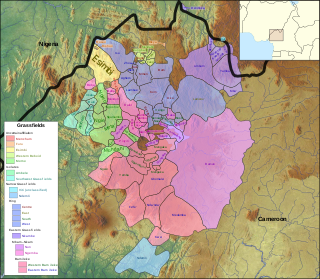
Babanki, or Kejom, is a Bantoid language that is spoken by the Babanki people of the Western Highlands of Cameroon.
The Bambalang language, also called Chrambo or Mbawyakum (Mboyakum), is a Grassfields Bantu language of Cameroon.
Miyobe or Soruba is an unclassified Niger-Congo language of Benin and Togo.
Chakali (tʃàkálɪ́ɪ́) is a Gur language of Ghana, spoken by almost 3,500 individuals in several villages in the Wa East District of the Upper West Region. More specifically, Chakali is spoken by inhabitants of the Tiisa, Sogla, Tousa, Motigu, Ducie, Katua and Gurumbele villages. The majority of Chakali speakers also speak Wali or Bulengi. Some believe that the language of Chakali is soon to be extinct, with Wali and Bulengi becoming the only languages that will be spoken in those villages.
Mixtepec Mixtec is a Mixtec language that is spoken in the lower Mixteca region. Mixtec language is largely spoken in the area of San Juan Mixtepec, district of Juxtlahuaca, state of Oaxaca. However, the language is also spoken in other areas including Tlaxiaco, San Quintín Baja California, Santa María California, and Oregon. In 2004, it was reported that approximately 12,000 people spoke the Mixtepec Mixtec language. While most speakers of the language refer to it as 'sa'an ntavi' meaning 'language of the poor' or 'poor people's language,' others refer to it as 'sa'an save' which means 'rain language.' It is not closely related to other varieties of Mixtec.








